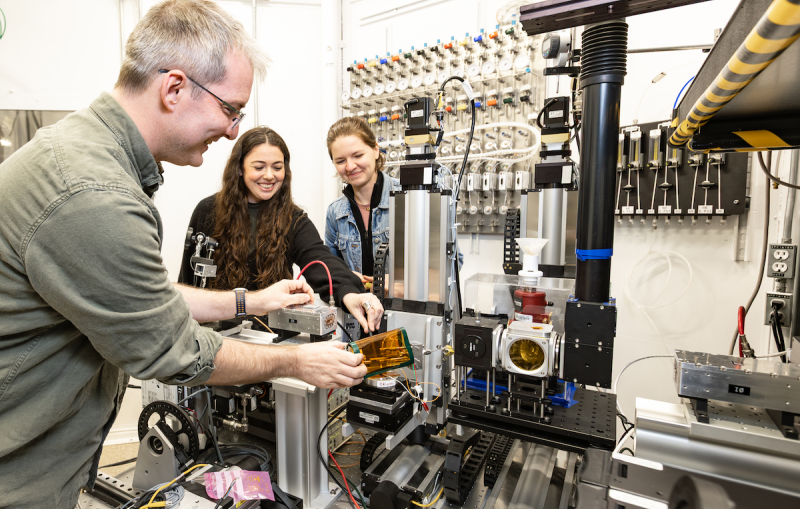Scientists use attosecond X-ray pulses to shed new light on the photoelectric effect
Their method provides a new tool to study electron-electron interactions, which are fundamental to many technologies, including semiconductors and solar cells.
A team of scientists from the Department of Energy's SLAC National Accelerator Laboratory has uncovered new information about the photoelectric effect, a phenomenon first described by Einstein over a century ago. Their method provides a new tool to study electron-electron interactions, which are fundamental to many technologies, including semiconductors and solar cells. The results were published August 21 in Nature.
When an atom or molecule absorbs a photon of light, it can emit an electron in a process known as the photoelectric effect. Einstein’s description of the photoelectric effect, also known as photoionization, laid the theoretical foundation for quantum mechanics. However, the instantaneous nature of this effect has been a topic of intense study and debate. Recent advancements in attosecond science have provided the tools necessary to resolve the ultrafast time delays involved in photoionization.
"Einstein won the Nobel Prize for describing the photoelectric effect, but a hundred years later, we've only just begun to truly understand the underlying dynamics," said lead author and SLAC scientist Taran Driver. "Our work marks a significant step forward by measuring these delays in the X-ray domain, a feat that has not been achieved before."
The team used an attosecond X-ray pulse from SLAC’s Linac Coherent Light Source (LCLS), just billionths of a billionth of a second long, to ionize core-level electrons. This process ejected the electrons from the molecules they were studying. They then used a separate laser pulse, which kicked the electrons in a slightly different direction depending on the time they were emitted, to measure the so-called "photoemission delay."
The photoemission delay can be thought of as the time between a molecule absorbing a photon and emitting an electron. These delays, reaching up to 700 attoseconds, were significantly larger than previously predicted, challenging existing theoretical models and opening new avenues for understanding electron behavior. The researchers also discovered that interactions between electrons played an important role in this delay.
"By measuring the angular difference in the direction of the ejected electrons, we could determine the time delay with high precision," said co-author and SLAC scientist James Cryan. "The ability to measure and interpret these delays helps scientists better analyze experimental results, particularly in fields like protein crystallography and medical imaging, where X-ray interactions with matter are crucial.”
The study is one of the first in a series of planned experiments aimed at exploring the depths of electron dynamics in different molecular systems. Other research groups have already started using the developed technique to study larger and more complex molecules, revealing new facets of electron behavior and molecular structure.
"This is a developing field,” said co-author Agostino Marinelli. “The flexibility of LCLS allows us to probe a wide range of energies and molecular systems, making it a powerful tool for making these types of measurements. This is just the beginning of what we can achieve on these extreme timescales.”
LCLS is a DOE Office of Science user facility.
Citation: T. Driver et al., Nature, 21 August 2024 (10.1038/s41586-024-07771-9)
Contact
For questions or comments, contact SLAC Strategic Communications & External Affairs at communications@slac.stanford.edu.
About SLAC
SLAC National Accelerator Laboratory explores how the universe works at the biggest, smallest and fastest scales and invents powerful tools used by researchers around the globe. As world leaders in ultrafast science and bold explorers of the physics of the universe, we forge new ground in understanding our origins and building a healthier and more sustainable future. Our discovery and innovation help develop new materials and chemical processes and open unprecedented views of the cosmos and life’s most delicate machinery. Building on more than 60 years of visionary research, we help shape the future by advancing areas such as quantum technology, scientific computing and the development of next-generation accelerators.
SLAC is operated by Stanford University for the U.S. Department of Energy’s Office of Science. The Office of Science is the single largest supporter of basic research in the physical sciences in the United States and is working to address some of the most pressing challenges of our time.






